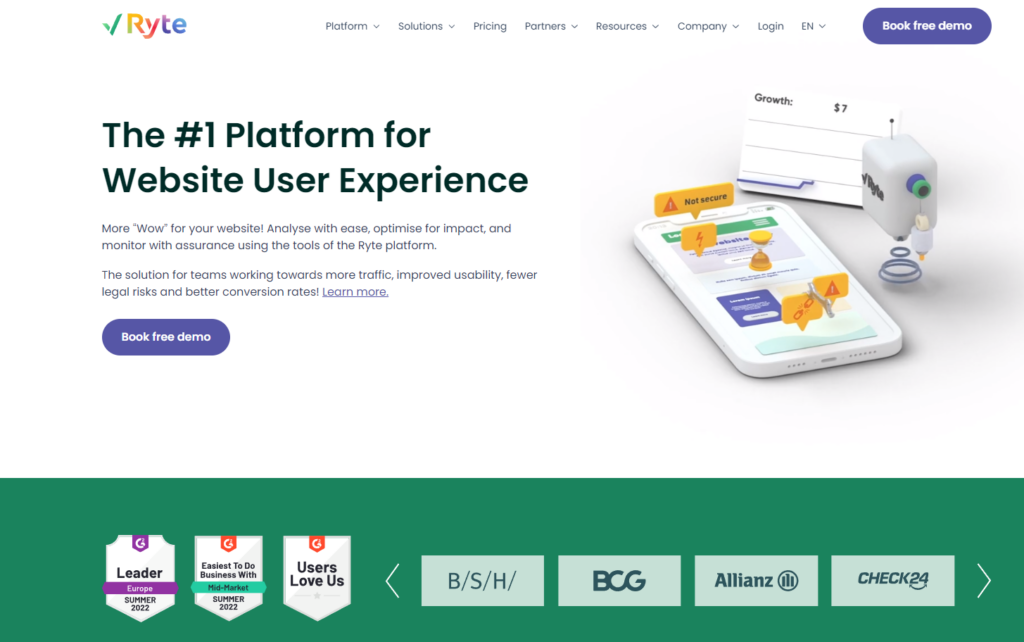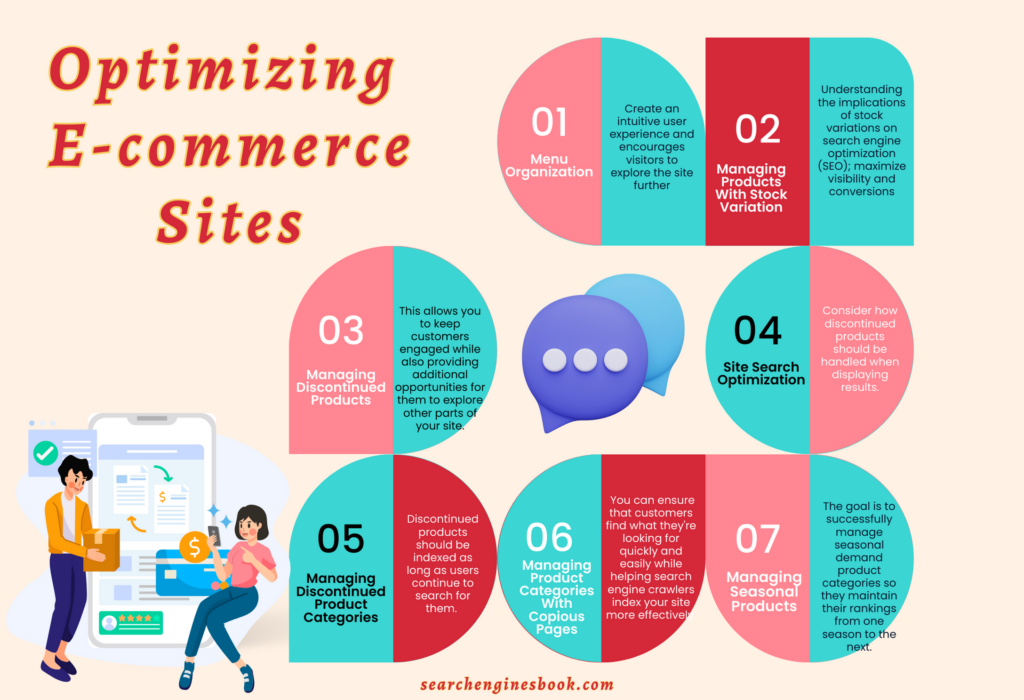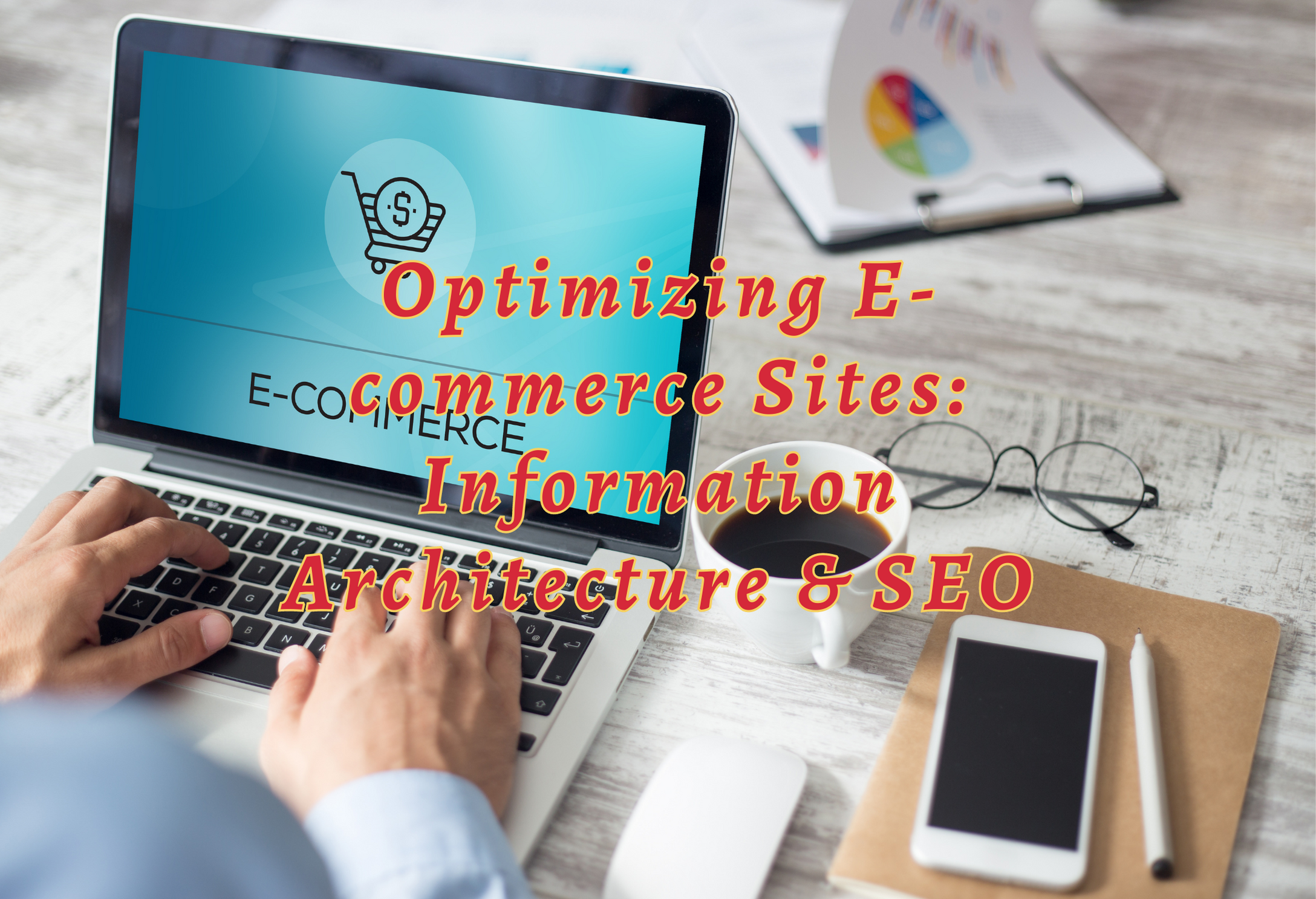Information Architecture and SEO for E-Commerce Sites
Search engine optimization (SEO) and information architecture are essential to a successful e-commerce website. Without the right combination of SEO, IA, and other elements like usability and user experience (UX), an online store can easily get lost in the noise that is internet marketing today.
To ensure your e-commerce site stands out from competitors, you must properly understand how to use information architecture and SEO for maximum visibility.
This blog post will explore tools for analyzing a website’s IA and menu organization tactics to manage products with stock variation, discontinued products/categories, copious pages within categories, and seasonal product cycles.

Why Site Architecture Matters for SEO?
Site architecture is the blueprint of a website that search engine crawlers use to understand its structure and content, which helps them index it for ranking purposes in SERPs (search engine result pages).
It’s an important factor in determining how easily users can find what they’re looking for on your site and how quickly search engines can crawl through your content to provide relevant results.
Poorly organized sites are often difficult to navigate, leading to a high bounce rate and poor user experience, which negatively affect SEO rankings. To ensure optimal performance from both sides, you need a logical hierarchy with clear internal linking structures that make sense from both a human and machine perspective.
When it comes to tools like Screaming Frog, they can be immensely useful in analyzing websites’ IA rapidly so modifications can be implemented accordingly while still preserving usability and reaching the desired SEO objectives.
Moreover, managing stock variation and seasonal products necessitates extra care since these items may demand different levels within the menu organization depending on how frequently they are altered throughout the year – something that must be considered during the initial planning stages before launching a new online store.
Information Architecture Aspects Which Influence SEO
To do this, three main factors need to be taken into account:
Proximity Of The Page To The Home Page
Proximity is key when ranking higher on SERPs – generally speaking, pages closer to the homepage will rank better than those further away.
That’s why e-commerce stores must place their most profitable products at or near the top level to benefit from increased visibility.
This also applies to second-level subcategories – by placing them close enough to the home page, you’ll give them more chances for success in terms of rankings.
Total Number Of Inbound Internal Links
The total number of internal inbound links is another factor that needs consideration when optimizing information architecture for SEO purposes.
The more quality backlinks your site has to point towards specific pages or products, the better their chance of ranking higher on SERPs due to increased authority and popularity signals from search engines like Google and Bing.
Relevance Of Internal Pages
Relevancy plays an important role, too – not all backlinks are created equal!
Search engines consider where these links come from – if they’re coming from relevant sources such as other product categories or related blog posts, this will help boost rankings even further compared with unrelated sources such as footer navigation menus or sitemaps.
Tools for Analyzing a Website’s Information Architecture
Tools for analyzing a website’s information architecture can be daunting, but with the right tools and strategies, it doesn’t have to be.
Screaming Frog
One of the most popular tools used by web admins is Screaming Frog.

This crawler tool lets you quickly identify your site’s structure and organization issues. It can help you find pages that need to be deeper in your navigation hierarchy or linked properly from other pages on your site.
The Crawl Depth section of Screaming Frog will show you how many clicks away each page is from the home page. This helps indicate how important a particular piece of content is relative to other pages on the website.
Additionally, Screaming Frog calculates Link Score, which measures how well-linked a page is within its information architecture – higher scores indicate more internal links pointing at it from other parts of the website.
Ryte
Organizing products with stock variations can also be tricky regarding IA analysis; however, some helpful solutions, such as Ryte, calculate OnPage Rank (OPR).

OPR considers factors like internal link structure and keyword relevance when determining importance. This could come in handy if you’re figuring out what product categories should get priority placement in menus or navigation bars.
Managing discontinued products or product categories requires careful consideration since they no longer need visibility but still need access for customers who may already own them or require supporting documentation.
In these cases, consider creating an archive section where all outdated items can live without taking up space in main menus or navigation bars while still accessible via search engine results and direct URLs if needed.
When dealing with seasonal products, make sure they don’t clutter up your IA during off-seasons by either hiding them until they become relevant again or having separate sections dedicated solely for seasonal items that only appear during their respective times of year – this way, customers won’t feel overwhelmed when browsing through your catalogs and will know exactly where to look for what they want without getting lost down rabbit holes!
Optimizing E-commerce Sites

Menu Organization
Menu organization is a critical part of website architecture and user experience. It’s important to ensure that users can easily find what they are looking for while ensuring that the menu is manageable and manageable.
Main Menu
The main menu should be concise and organized to make sense to the user. This means grouping similar items, using clear labels, and ensuring there aren’t too many items on the menu simultaneously.
Additionally, it’s important to ensure all links are working properly, so users don’t end up with broken pages when they click through from the main menu.
Additional Links Through AJAX
Ajax (Asynchronous JavaScript And XML) is a web development technique that creates interactive web applications without reloading entire pages whenever the user takes action.
This allows additional menus or links to appear as needed without having them cluttering up your main navigation bar all the time.

Contextual Submenus
Contextual submenus allow users to access related content quickly and easily without having to scroll down long lists of options to find what they need.
For example, suppose you have a page about cars. In that case, you could include contextual submenu options such as “Make & Model” or “Price Range,” allowing visitors who already know what type of car they want easier access than scrolling through a list of all available models on one page.
Filters
Filters help narrow search results by allowing users to select specific criteria such as price range or color preference before displaying relevant products only within those parameters.
This helps reduce clutter on product pages and makes it easier for customers who know exactly what they’re looking for to find it quickly without being overwhelmed by too much information at once.
Managing Products with Stock Variation
It ensures that customers can access the right product at the right time and can help boost sales by ensuring availability. Stock variation also directly impacts SEO, as it helps search engines understand what type of content is available on your site and how often it changes.
When managing stock variation, there are several key points to consider:
Having the right information architecture and SEO strategy for managing products with stock variation can help ensure customers have a seamless shopping experience on your e-commerce site.
Managing Discontinued Products
Managing discontinued products in an e-commerce site for customer satisfaction and loyalty is important. When customers search for a product that has been discontinued, they should be informed of the discontinuation instead of being led to a 404 page or another dead end. This can lead to frustration and lost sales opportunities.
One way to effectively manage discontinued products is by redirecting them to similar items on the website. By doing this, customers will still find what they seek while staying within your website’s domain.
Additionally, it helps with SEO as you are not creating broken links or pages that no longer exist, which can hurt your rankings in search engine results pages (SERPs).
Another way to handle discontinued products is by explaining why the item was removed from inventory and when it may become available again. This gives customers insight into why certain items were taken off shelves and keeps them informed so they feel their needs are being met and their questions answered.
It also encourages them to return later if the item becomes available again, which increases customer loyalty over time.
Finally, another option is offering alternative solutions, such as recommending related items that may meet their needs better than the original product before it was taken out of stock or even suggesting different brands altogether, depending on the product type we are discussing.
Doing this allows you to provide value while helping customers make an educated decision regarding their purchase without having access to all options initially presented on your storefront page due to one particular item being unavailable anymore.
Managing Discontinued Product Categories
When it comes to managing discontinued product categories, the key is to make sure that customers can still find the products they are looking for. This means creating a clear and concise navigation structure that lets customers quickly locate their needs.
Create An “Archive” Section
One way of doing this is by creating an “archive” section on your website where all your discontinued products are listed in one place. This makes it easy for customers to search and find exactly what they want without having multiple pages or menus.
Create Separate Product Categories
Another option is to create separate product categories for each type of discontinued item you have available. For example, sell clothing items that have been retired from production. Create a category specifically dedicated to those items so customers can easily access them when searching through your site.
Add Filters Or Sorting Options
You should also consider adding filters or sorting options within these categories so customers can narrow their search results further based on price, size, color, etc., as this will help them find exactly what they need faster and more efficiently than ever.
Additionally, remember to include keywords related to the discontinued items to optimize SEO rankings and ensure potential buyers know about them too!
List Out All Information
Be sure to list all of the information regarding each product and include images whenever possible. This will give shoppers a better idea of what they’re buying before making any purchases, which could increase sales overall.
Managing Product Categories with Copious Pages
This requires careful organization and optimization of the site architecture. Here are some tips on how to do this effectively:
With a well-structured information architecture, you can ensure that product categories with copious pages are easily navigable and optimized for SEO.

Managing Seasonal Products
Managing seasonal products requires careful planning and organization but can be extremely beneficial for businesses. This includes:
Organizing Menus Properly
The first is the importance of having an organized product catalog and menu structure. This should include clear labels for each season or holiday so customers can easily find what they want. Additionally, if you have multiple seasons in one year, consider creating sub-categories within the main categories to organize your products further.
Presenting Information Accurately Onsite
Another important factor when managing seasonal products is how you present them on your website. It’s important to make sure all information about the product is up-to-date and accurate as well as easy to access from any page on your site. Consider using images or videos of the product in action along with detailed descriptions and customer reviews so visitors can better understand what they’re buying before making their purchase decision.
Promotions
Promotions are a great way to draw attention to specific seasonal items while increasing sales during certain times of the year, like holidays or back-to-school shopping periods.
Consider offering discounts on certain items or free shipping incentives during these times and running special campaigns through social media channels such as Facebook Ads or Google Adwords campaigns targeting users who may be interested in purchasing those particular items at that time only.
Key Aspects To Remember
Contextual submenus: links proportionate to the potential of each category and subcategory.
Only pages with high search potential and for which we have a compelling offer should be indexed.
Menu: as many links as needed, as few as possible.
Correct stock breakage management to avoid loss of rankings/bounce.
Introducing a hierarchy in product lists facilitates navigation to subcategories while avoiding clumsy pagination.
To focus authority on pages with the highest conversion rate, keep menus ordered according to their categories’ seasonal potential.
FAQs About Information Architecture and SEO for E-Commerce Sites
Conclusion
The key to successful information architecture and SEO for e-commerce sites is understanding the tools available, organizing menus properly, managing products with stock variation, discontinuing products and categories when necessary, and keeping up with seasonal trends. With these tips in mind, you can ensure that your website’s IA and SEO are optimized for success.
Are you looking for ways to increase your e-commerce site’s visibility and ranking on search engines? Let us help. We offer expert solutions in Search Engine Optimization, Site Architecture, Web Usability, and User Experience that can give you an edge over competitors.
Our team of experts will work with you to create a customized plan tailored specifically to meet your business needs so that customers can find what they are looking for quickly and easily. Contact us today!
